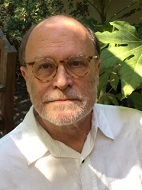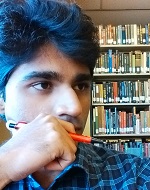Apply now to join our next cohort of Community Science Fellows and Community Leads!

Photo courtesy of Neil Kremer
Hermosa Beach is a small beachfront city in Los Angeles County, California with a population of nearly 20,000 people. In 2015, the city established an aggressive carbon reduction goal via a Municipal Carbon Neutral Plan: achieve carbon neutrality for municipal operations by the end of 2020. By successfully reaching this goal, the City can demonstrate the feasibility of a low-carbon future and encourage others to do the same. (Note: This goal was ultimately tempered during the project due to some opposition from the community.)
The Hermosa Beach-TEX project was launched in late 2016 to explore how much renewable energy Hermosa Beach could generate in pursuit of this goal. It consisted of three primary components:
The technologies explored and determined to be feasible included rooftop solar, small-scale vertical wind turbines, and micro-scale anaerobic digestion (i.e., converting organic waste to electricity). For each technology, the team evaluated the potential power generation (e.g., based on efficiency, available area, and renewable resources [wind or sunlight]). These were considered within city limits or in partnership with neighboring cities. The overnight capital cost ($/Watt) and the levelized cost of energy ($/MWh) were estimated to permit the City to objectively compare their respective costs.
The project team used publicly available information to develop estimates of the technical and economic feasibility of each technology – and their costs. These included research papers and reports, publicly available data from the City and national labs (e.g. National Renewable Energy Laboratory, U.S. Department of Energy, Lawrence Berkeley Laboratory), cloud-based GIS and energy modeling tools (e.g., Google Project Sunroof), past and present renewable energy bids and contracts for the city, information requests to scientists and utility companies, and quotes from technology developers. The team also reviewed state regulations and utility tariffs for applicability to the City’s ultimate implementation process. Estimates and methodologies presented were double-checked based on team experience.
To coordinate and achieve this ambitious scope, the project team met once or twice monthly by telephone to share updates and exchange information. Lon and Abhishek touched base weekly to discuss progress and next steps.
The outputs generated by this project included:
The report generated through this project provides a comprehensive review of all of the renewable energy opportunities for the City. As Hermosa Beach pursues its carbon reduction plan, the report’s recommendations can serve as a blueprint and guide for decision-making and next steps. This includes prioritizing projects, pursuing funding, drafting requests for proposals and evaluating costs for budgeting and the awarding of contracts.
Information about next steps for this analysis and ultimate impact remains pending until the information is presented to City Council. However, Kristy noted that the project will help the community identify opportunities to expand renewable energy resources in the city, resulting in lower electricity costs, reduced greenhouse gas emissions, and greater resilience to grid disruptions.
The high-level approach applied in this project can be extended relatively easily to neighboring beach communities west of Los Angeles, where conditions are similar (e.g., solar insolation, wind patterns, land use constraints, air permitting requirements, state standards for disposal of organic waste). The methodology and considerations are especially relevant when such communities share goals similar to Hermosa Beach. Although the share of annual consumption that can be supplied with local renewables will vary from city to city, local renewables can probably be combined with Community Choice Aggregation and other programs to meet greenhouse gas reduction targets over time.
Elements that contributed to the success of this project stemmed largely from ready provision of data and resources by city staff, and the experience of the project team. While occasionally difficult to obtain, the availability of needed data was key. Early definition of the project scope was critical, and efficiency was maximized by distributing key tasks and questions according to availability and expertise. Regular, frequent calls between team members were helpful for keeping the project on track and getting feedback from project teams.
This project was unique in that the scientific partner (Lon Peters) was joined by an early-career scientist, Abhishek Rao, at the start of the project via a pilot of a TEX community science training initiative. Abhishek was invited to join the project as a Fellow to learn about community science hands-on, and engage with an established scientist outside of his academic and professional network. Abhishek was able to contribute to the project substantively and uniquely: while Lon is an energy economist, Abhishek is an energy engineer. Together they were able to leverage their diverse backgrounds to approach the challenge from multiple angles.
Defining meeting expectations is very important. Looking back on their collaboration, the team recognized that although they had regular contact, these interactions could have been better defined and would have benefited from being even more frequent. When meetings were less regular, questions and action items languished. Improving these interactions requires that collaborators be real and communicative in setting commitments and conveying expectations. This includes communicating and responding with flexibility to significant personal changes outside of the project such as relocations. Finally, Abhishek noted that time management is key – especially when working in a volunteer context and having to manage other professional and personal commitments. Kristy extended this observation to communicating about your time: it’s important to be realistic when committing to action items and setting timelines.
Ensure a well-defined initial project scope, but don’t shy away from adjusting it as necessary. Not all approaches to a problem work out well. In this case, the team realized a few technologies were not feasible, and hence were not worth the time pursuing to investigate. It is important to identify these approaches that don’t work and refine your focus on the ones that do.
This project was launched in partnership with the International City/County Management Association.
By Abhishek Rao
Editor’s Note: TEX created a Community Science Training/Fellowship opportunity for the Hermosa Beach, CA project in Fall 2016. While TEX projects typically include scientific partners who are more established in their field, we saw an opportunity to engage a student or early career scientist on one of our newer projects. By inviting such an individual to join a team in partnership with a more experienced scientist, he/she could see community science first hand and learn how to connect their science to local concerns. TEX looks forward to expanding this model to other projects.
In September 2016, I received an email from my graduate school program manager. Thriving Earth Exchange (TEX) was looking for its first Fellow, a student or early-career scientist to work on a new project in Hermosa Beach, California. It was over a year since I had graduated and started my job designing solar photovoltaic systems to power houses across the country. I quite enjoyed my work and my life in Southern California. But something didn’t feel right. I missed being in an academic environment, spending long hours in the library, constantly learning and being immersed in intellectual conversations about the big challenges in the world. I missed the feeling of curiosity that drove me to research these challenges, of wonder for the latest scientific discoveries and technological breakthroughs, and of awe for the everyday ways in which science and technology help solve so many of these challenges. But most of all, I felt this pent-up potential thumping inside of me: skills that I could put to good use beyond my day job, and leisure time that I could better utilise. I wanted to do more with my life. I decided to apply for the Fellowship.
TEX, powered by the American Geophysical Union, brings together scientists and community leaders to use science to tackle community issues related to natural resources and climate change. The effects of a changing climate usually manifest at the local level, affecting the communities we live in: fires and floods, hurricanes and heat waves. Very often, our communities do not have the technical expertise to understand the causes and to mitigate the effects of natural hazards. On the other hand, the scientific community undertakes a lot of modelling and simulation work, with little input from or impact to the real-world communities outside of their circles. TEX works at bridging this gap.
I was interviewed and selected as the first TEX Fellow, to work on a new project in Hermosa Beach, CA. In 2015, the City of Hermosa Beach, a beach town not far from Los Angeles airport, established aggressive carbon reduction goals for the city. The objectives of the TEX project were to identify viable renewable energy technologies for the city, to estimate the power and energy generation potential of these technologies, and to compare costs of these technologies. I recognised that it was a worthy ambition for a whole city to go renewable, and that if successful, the model could be replicated in some measure in other cities, and even scaled to entire states or even countries. I was excited with the prospect!
I realised right at the outset that Lon and I made a terrific team. Dr. Lon L. Peters is the senior scientist I worked with on the project. Lon has a PhD in Economics from Yale University and recently retired from his position in resource planning at a Southern California electric and water utility. Though thirty years his junior, Lon considered me an equal, always listening to what I had to say and trusting my opinions. At Hermosa Beach, we worked with Dr. Kristy Morris, an Environmental Analyst for the City and a PhD in Environmental Science from Griffith University, Australia. Kristy is the lead official for the City’s Carbon Neutral Plan, and was very encouraging and supportive of our efforts, and helpful with all our information and data requests to the City. Melissa Goodwin was our Project Manager at TEX, instrumental in facilitating the project, especially streamlining communication among team members and helping set the timelines for the various phases of the project. Melissa was phenomenal at her job, enabling us with the tools and resources we needed and keeping the project on track in general. It was an amazing opportunity for an early-career scientist like me to be mentored by experts in my field. It was like the PhD program I never had, replete with a project manager!
Lon and I started with defining the scope of the project. We listed all the potential renewable energy technologies the City could consider, including distributed solar photovoltaic, anaerobic digestion, wind, wave, tidal, and geothermal. For each technology, we evaluated the renewable resource available and the potential power and energy generation capacity within city limits, or in partnership with the neighbouring cities of Manhattan Beach and Redondo Beach, or in the case of wind – off the city’s shores. We estimated the overnight capital cost ($/W) and the levelized cost of energy ($/MWh) for each technology. This allowed us to objectively compare the cost of the various renewable energy technologies available to the City.
We relied on a number of different sources for our inputs: research papers and reports, publicly available data from City records and national laboratory publications, cloud-based GIS and energy modelling tools, the City’s past and present renewable energy bids and contracts, information requests to scientists and utility companies, and quotes from new technology developers. Two seminal papers we used for literature reviews were by Prof. Juan Matute’s group at UCLA and Prof. Mark Jacobson’s group at Stanford, both dealing with evaluating renewable energy potential within geographic areas. We used historical data from NREL’s publications to model the capital and levelized costs of energy technologies. Google’s Project Sunroof and HelioScope were respectively handy in simulating the city’s solar potential on the residential and commercial scales. The City’s current waste collection contract as well as a past bid for a waste-to-energy contract proved useful for estimating the potential and costs of anaerobic digesters. Having contacted developers of small-scale on-shore and off-shore wind energy technologies, it was determined that these are currently not fully mature or feasible for the City of Hermosa Beach, and it would be some time before they become cost-effective. Southern California Edison, the electric utility serving the city was helpful with information about grid integration of the renewable technologies we evaluated.
Some of my biggest takeaways from the project are defining and refining the scope. Over the course of the project, we learned that some technologies such as small-scale wind and wave, though attractive, are not viable for the City at this time. Realizing that we may have overestimated their potential initially, we had to go back and refine our focus to the more viable technologies such as solar and anaerobic digestion. I learned how to collect information from various sources, and if little was available, how to make safe assumptions from the information at hand. Most importantly, I was exposed to the functioning of grassroots government: how budgets and grants are approved, how requests for proposals (RFPs) are drafted, how bids are evaluated and contracts awarded, and how policymaking happens at the municipal level. Personally, the project taught me how to manage my schedule well, and to set aside dedicated time to work on projects I am passionate about while juggling my professional and personal commitments. If there was one thing I could change if I started the project over, I would be more real to myself and more communicative to my team members about my expectations of myself and my commitments to them.
In late 2017, we delivered a report to the City detailing possible renewable energy technologies within Hermosa Beach, their generation potentials, and costs. Kristy along with Lon will share these results with the City Council in a forthcoming meeting and use the recommendations to inform decision making, in terms of drafting RFPs for renewable energy technologies and cost considerations for budgeting and awarding contracts.
Being a TEX Fellow was an extremely enjoyable and enriching experience. I can sense that this is the start of a lifelong love affair with pro bono consulting. I would highly recommend any motivated early-career scientist or subject matter expert in the earth and energy sciences to work with TEX. If you are aware of any community issues that could use a scientific hand, be sure to let TEX know. As for me, if I ever convince myself to get a PhD, my problem statement would most definitely be a TEX-style community science issue. There is a certain fulfillment to see your work have a tangible impact on the people and communities around you.

Dr. Kristy Morris is a consensus building, creative problem solver who employs her strong leadership skill to effect environmental change. Kristy manages and implements a wide range of programs and plans for the City of Hermosa Beach, including the Municipal Carbon Neutral Plan that sets an aggressive goal for the City’s facilities and operations to be carbon neutral by 2020. To achieve this, Kristy is exploring a range of energy efficiency, green technology and carbon reduction measures. In addition, Kristy manages the City’s solid waste and recycling programs, stormwater pollution prevention programs and water conservation programs. Kristy spends most of her leisure time in the ocean and advocates passionately about pollution prevention. Kristy earned her Ph.D. in Environmental Science from Griffith University, Gold Coast, Australia, investigating rapid methods to organic pollutants in wastewater. She also earned a Bachelor of Science with first class honors, from Griffith University.

Dr. Lon Peters is the President of Northwest Economic Research, LLC, located in Pasadena, California. Lon has been actively involved in the electric utility industry for over thirty years, and recently retired from the position of Integrated Resources Planning Administrator at Glendale Water and Power in Glendale, California. His past and current work includes compliance with California’s renewable portfolio standards, making the transition away from carbon-intensive energy supplies, long-term planning and short-term energy transactions, litigation support, and risk management. Lon has a Ph.D. in Economics from Yale University.

Abhishek Rao is on a mission to help power the Earth with renewables. He is always in search of challenges in the field where he can put his creative and analytical skills to good use, and actively seeks out opportunities to advocate for clean energy. He has previously worked on the U.S. DOE SunShot Initiative, and has published research in scientific journals, international conferences, and in an encyclopedia for young adults on solar energy. He currently designs rooftop solar systems for Sunrun, Inc. in California and has helped over 200 American homes derive their energy from the sun. Abhishek holds a Master’s in solar energy engineering, business and policy from Arizona State University. When he is not thinking about his mission, Abhishek likes to read, write, and attend indie folk concerts.
(c) 2024 Thriving Earth Exchange